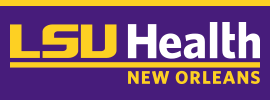Event Website
https://publichealth.lsuhsc.edu/honorsday/2022/
Start Date
2-4-2024 9:00 AM
Description
Background: Louisiana has the second highest proportion of incarcerated people living with HIV (PLWH). Evidence shows that linkage to care programs enhance HIV clinical outcomes post-incarceration. Louisiana operates two such programs through Medicaid and the Office of Public Health. However, little is known about HIV disparities among formerly incarcerated PLWH in Louisiana, and few studies examine the long-term post-release impacts of linkage programs on HIV outcomes. Objectives: To 1) describe and compare HIV outcomes of PLWH released from Louisiana corrections custody to all Louisiana PLWH along the HIV care continuum, and 2) assess pre-release program impacts on HIV care continuum outcomes within 12 months after release. Methods: Retrospective cohort study of PLWH released from Louisiana corrections custody between 1/1/2017 and 12/31/2019. HIV care continuum outcomes were assessed within 12 months after release, between 1/1/2018 and 12/31/2020. Analytical methods used are two-proportion z-tests (Aim 1) and multivariable logistic regression (Aim 2). Results: Of 681 people who met inclusion criteria, 228 (33.5%) achieved viral suppression and 252 (37%) received any intervention. The study population had significantly higher proportions of receiving (p=<.0001) and retaining care (p<.0001) than members of the general population (n=21,438) by year-end 2020. Conversely, the general population had a significantly higher proportion (p<.0001) of people linked to care. Receiving any intervention was associated with higher odds of attaining all continuum steps, though only significantly for linkage to care (aOR=1.592, p=.0083). Conclusions: HIV care outcomes are significantly higher for PLWH released after 2017 except for linkage to care than the general population of PLWH in Louisiana. Receiving any intervention increased the odds of achieving HIV care outcomes, and was significantly impactful at improving linkage to care. Recommendations: Existing linkage to care efforts for PLWH leaving incarceration require additional resources to eliminate linkage disparities with the general population.
Recommended Citation
Sugarman, Olivia K.; Wendell, Debbie; Bachhuber, Marcus A.; and Robinson, William T., "HIV Outcomes after Release from State Corrections: Examining Two Pre-release Interventions" (2024). School of Public Health Delta Omega Honors Day Poster Sessions. 9.
https://digitalscholar.lsuhsc.edu/dohd/2022/2022/9
HIV Outcomes after Release from State Corrections: Examining Two Pre-release Interventions
Background: Louisiana has the second highest proportion of incarcerated people living with HIV (PLWH). Evidence shows that linkage to care programs enhance HIV clinical outcomes post-incarceration. Louisiana operates two such programs through Medicaid and the Office of Public Health. However, little is known about HIV disparities among formerly incarcerated PLWH in Louisiana, and few studies examine the long-term post-release impacts of linkage programs on HIV outcomes. Objectives: To 1) describe and compare HIV outcomes of PLWH released from Louisiana corrections custody to all Louisiana PLWH along the HIV care continuum, and 2) assess pre-release program impacts on HIV care continuum outcomes within 12 months after release. Methods: Retrospective cohort study of PLWH released from Louisiana corrections custody between 1/1/2017 and 12/31/2019. HIV care continuum outcomes were assessed within 12 months after release, between 1/1/2018 and 12/31/2020. Analytical methods used are two-proportion z-tests (Aim 1) and multivariable logistic regression (Aim 2). Results: Of 681 people who met inclusion criteria, 228 (33.5%) achieved viral suppression and 252 (37%) received any intervention. The study population had significantly higher proportions of receiving (p=<.0001) and retaining care (p<.0001) than members of the general population (n=21,438) by year-end 2020. Conversely, the general population had a significantly higher proportion (p<.0001) of people linked to care. Receiving any intervention was associated with higher odds of attaining all continuum steps, though only significantly for linkage to care (aOR=1.592, p=.0083). Conclusions: HIV care outcomes are significantly higher for PLWH released after 2017 except for linkage to care than the general population of PLWH in Louisiana. Receiving any intervention increased the odds of achieving HIV care outcomes, and was significantly impactful at improving linkage to care. Recommendations: Existing linkage to care efforts for PLWH leaving incarceration require additional resources to eliminate linkage disparities with the general population.
https://digitalscholar.lsuhsc.edu/dohd/2022/2022/9


